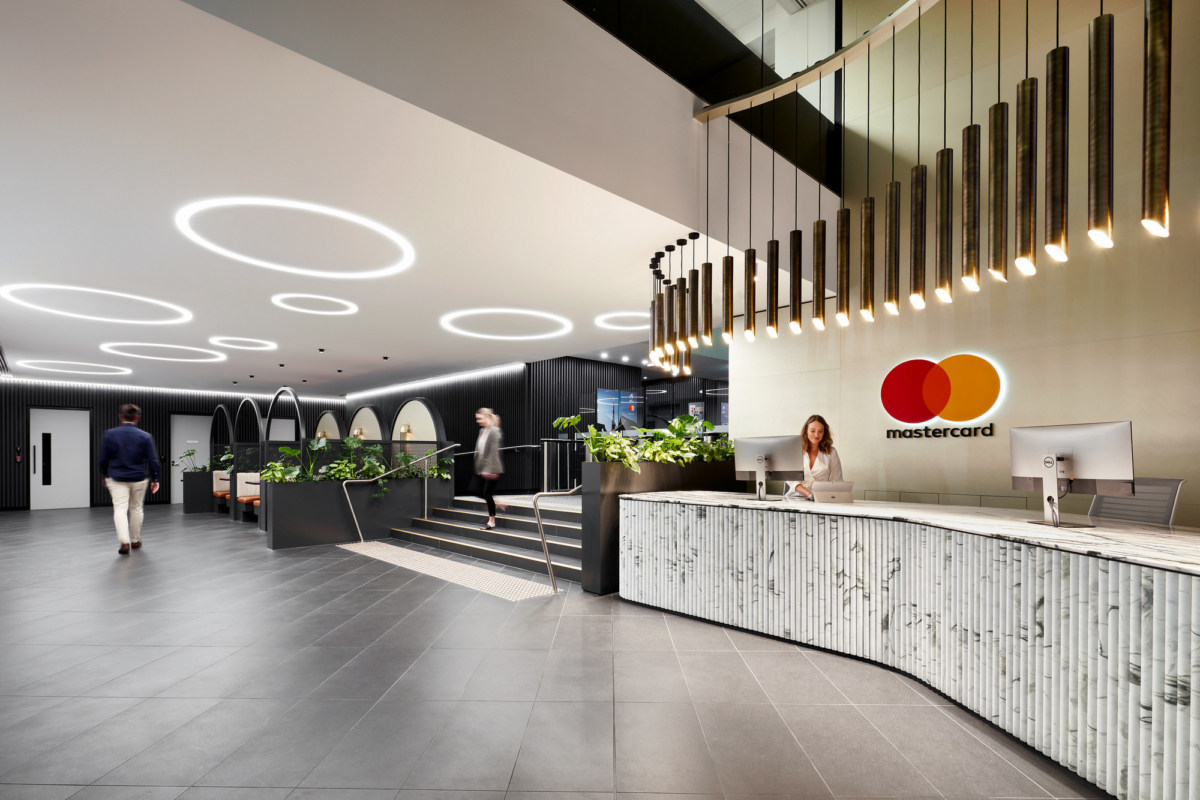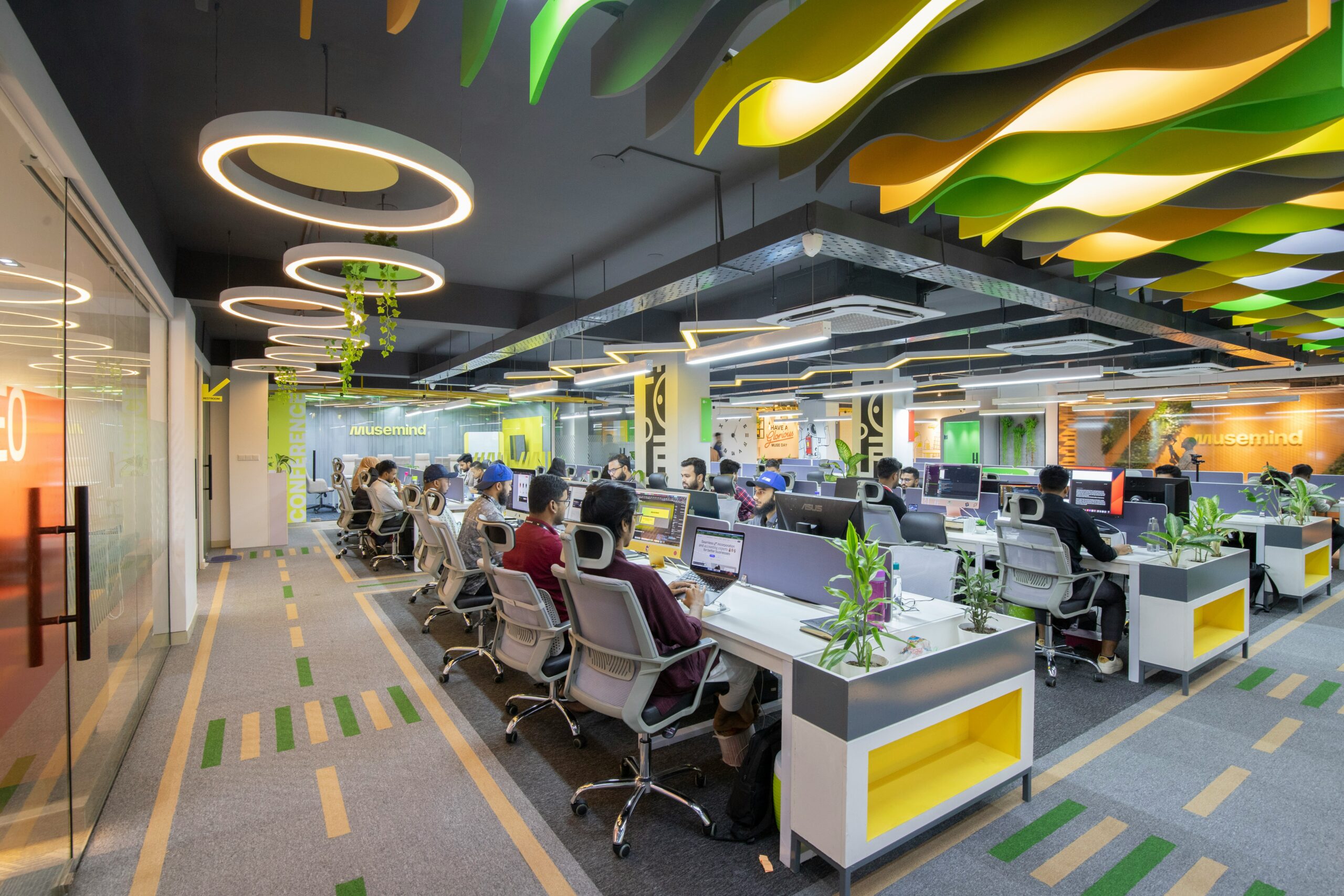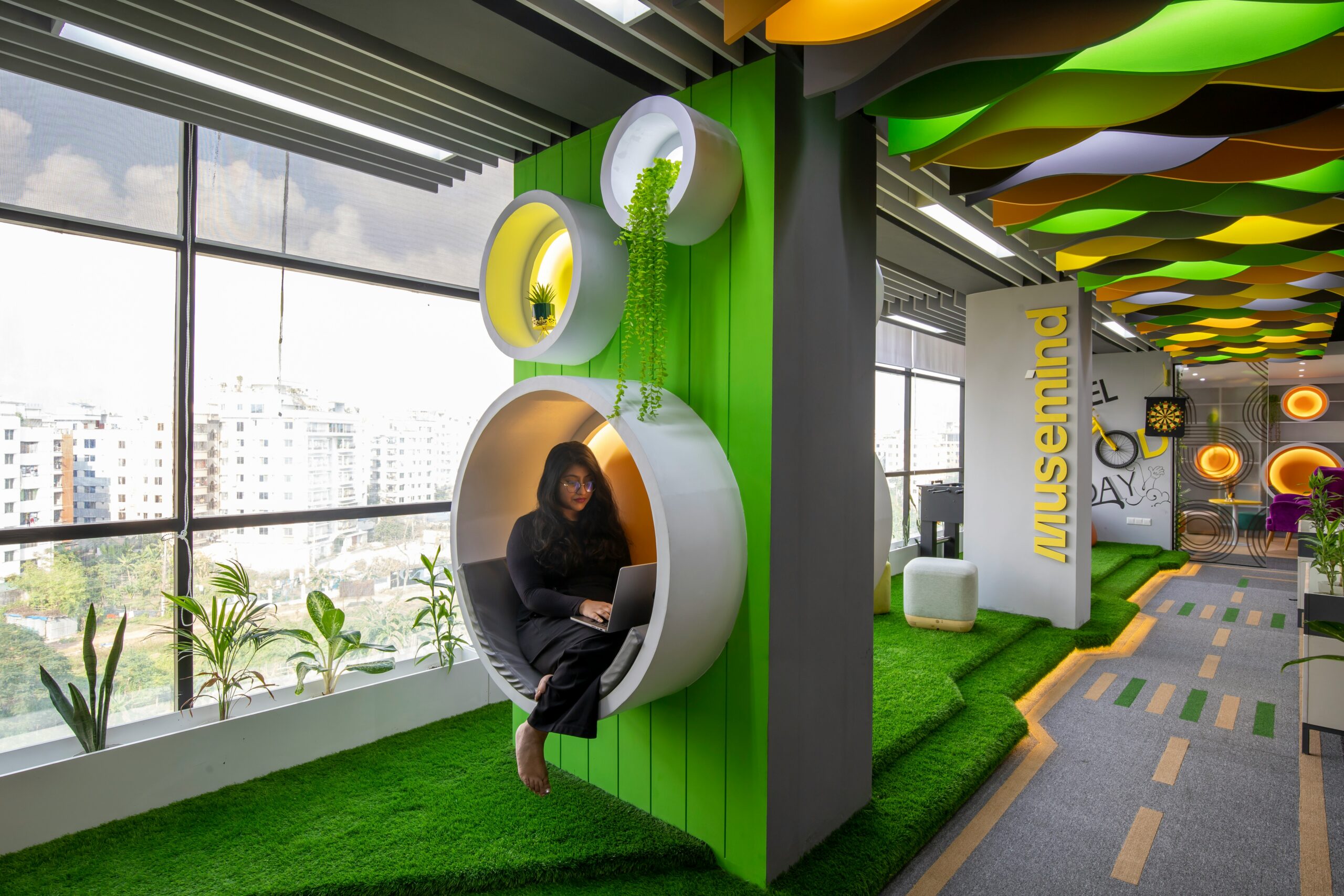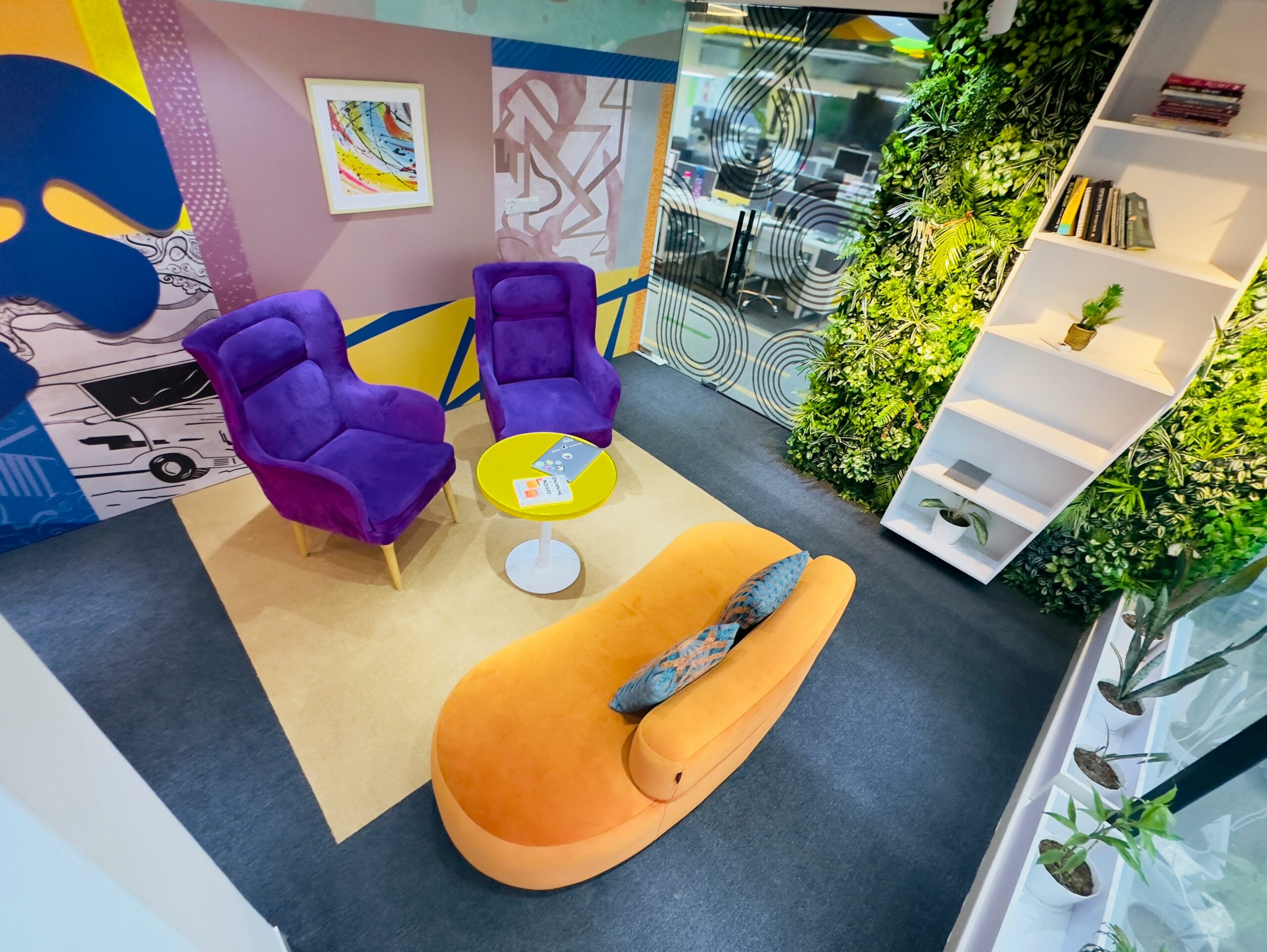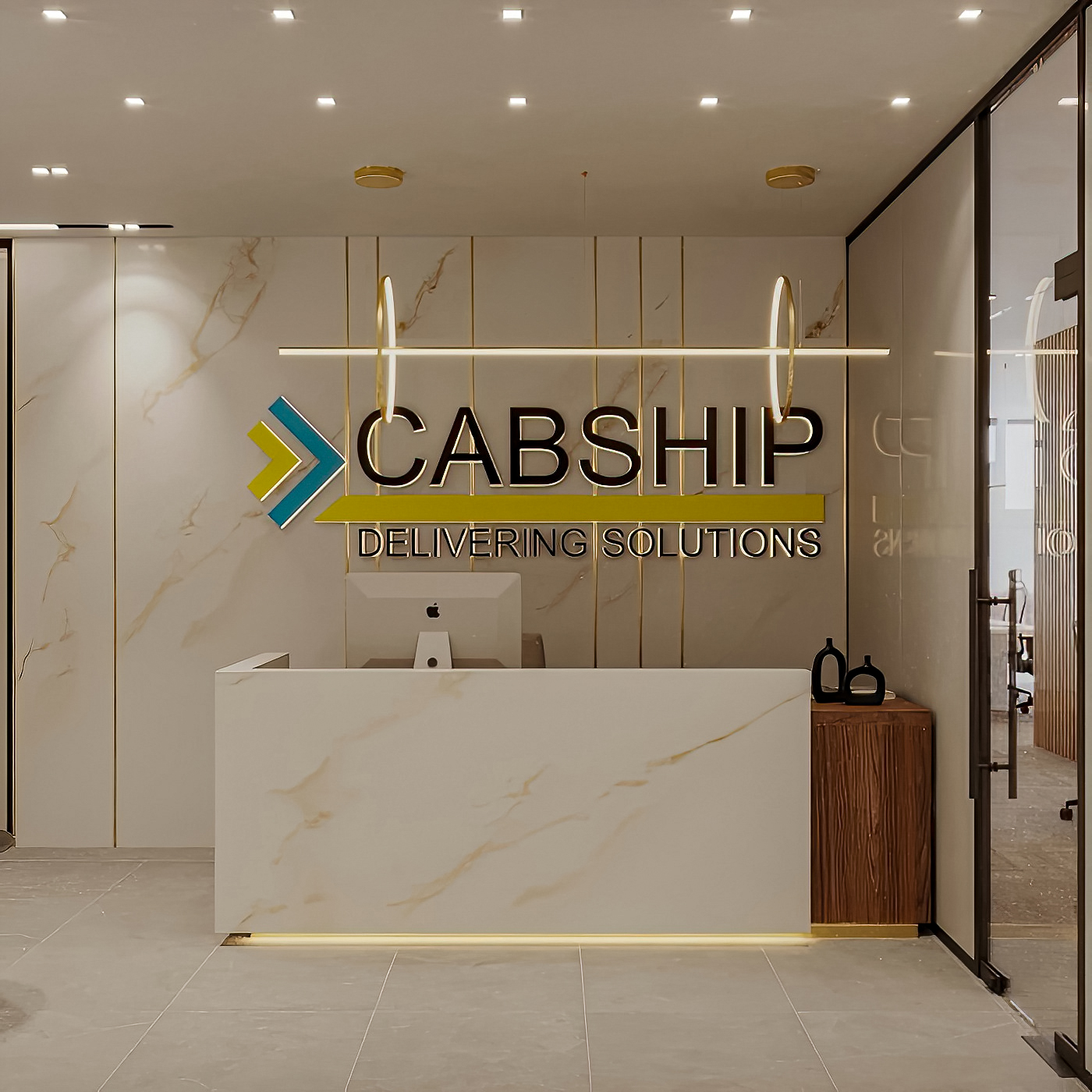How physical space can drive brands, teams, and performance.
For a long time, interior design was seen as a finishing touch—an aesthetic, almost decorative element. Today, that perspective has shifted. More and more, companies are recognizing the power of physical space as a fundamental part of their brand strategy, organizational culture, and overall performance.
At Riskos, we believe that the space where people work should be designed with the same level of care and intention as a business plan.
THE ENVIRONMENT AS AN EXTENSION OF THE BRAND
A well-designed space communicates. A company that invests in a space aligned with its visual identity and core values conveys coherence, professionalism, and a forward-looking mindset.
For example, a young and creative brand may benefit from an informal environment with vibrant colors and open collaboration areas.
Meanwhile, a company operating in more traditional sectors might choose a more sober design, with clean lines and refined materials.
What matters most is that the space “speaks the same language” as the brand. This consistency builds customer trust and increases perceived value.
It communicates the company’s values, how it positions itself in the market, and how it wants to be seen by clients, partners, and employees.
Colors, materials, layout, and even the choice of furniture all tell a story — and that story can either strengthen or weaken the brand’s identity.
Companies that care about their image should view their offices as a three-dimensional business card.


